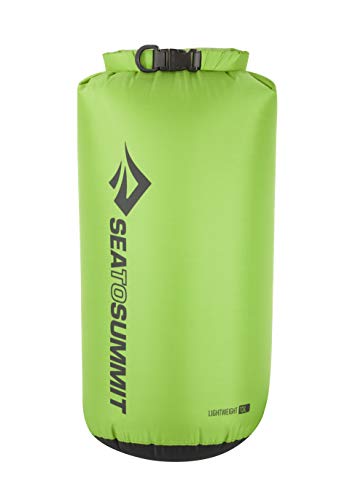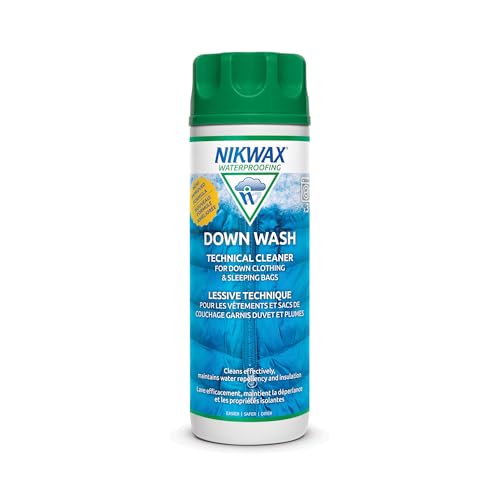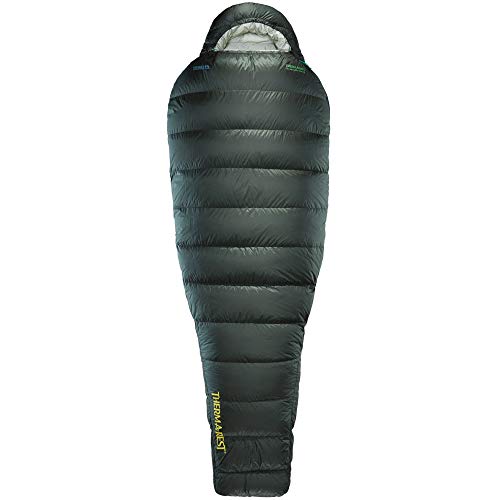When the temperature drops on a backcountry trip, your sleeping bag becomes your most critical piece of gear. An ultralight or lightweight cold-weather sleeping bag is the key to a warm, restorative night’s sleep without weighing down your pack. Modern designs use premium down, advanced shell fabrics, and innovative construction to achieve an incredible balance of warmth, weight, and packability.
Selecting the right bag involves considering temperature ratings, insulation type, weight, and features that match your personal sleep style. From minimalist mummy bags for the weight-conscious thru-hiker to roomier options for side sleepers, the market offers a solution for every cold-weather adventurer. This roundup highlights ten of the best options and essential accessories to keep you comfortable and protected from the elements.
The Best Ultralight & Lightweight Cold-Weather Sleeping Bags
- Rab Mythic Ultra 360 Sleeping Bag
- Therm-a-Rest 2-in-1 Stuff Sack Camping Pillow
- Sea to Summit Lightweight Dry Sack
- Nikwax Down Wash, 300ml
- Grangers Down Wash Kit
- Therm-a-Rest Hyperion 32F Ultralight Down Mummy Sleeping Bag
- NEMO Equipment Disco Down Sleeping Bag
- Sea to Summit Spark Ultralight Down Sleeping Bag
- Outdoor Vitals Sleeping Bag Liner
- Western Mountaineering UltraLite Sleeping Bag
Rab Mythic Ultra 360 Sleeping Bag

For the ultralight enthusiast who refuses to compromise on warmth, the Rab Mythic Ultra 360 is a top-tier choice. It utilizes exceptionally high-quality 900+ fill power RDS Certified European Goose Down, offering maximum loft for its weight. The 7D ripstay nylon shell is incredibly thin and light, contributing to an overall package that is remarkably packable for a 20°F bag.
This mummy-shaped bag is designed for minimal weight and maximum thermal efficiency. Every component is engineered to shave grams while maintaining durability and performance, making it ideal for alpine climbing and fast-and-light backpacking missions where every ounce counts.
Therm-a-Rest 2-in-1 Stuff Sack Camping Pillow

This innovative product from Therm-a-Rest solves two problems at once, helping you maintain a lightweight kit. It functions as a reliable stuff sack for compressing your sleeping bag or clothing during the day. When you’re ready to sleep, simply reverse it and stuff it with your spare clothes to create an instant, comfortable pillow.
The reversible design features a tough polyester exterior for durability and a soft, brushed polyester lining for comfort against your face. This versatility allows you to leave a dedicated pillow at home, saving valuable space and weight in your pack without sacrificing a good night’s rest.
Sea to Summit Lightweight Dry Sack

Protecting your expensive down sleeping bag from moisture is non-negotiable. The Sea to Summit Lightweight Dry Sack provides reliable, waterproof storage in a minimal package. Weighing very little, this 13-liter sack is perfect for keeping your sleeping bag and spare clothes completely dry in a downpour or when crossing a stream.
Constructed from PU-coated 70D nylon with a 10,000mm waterhead rating, it offers excellent protection. The secure hypalon roll-top closure is easy to use and creates a reliable seal, while the taped seams ensure no water can seep through stitches. The included D-ring also lets you easily attach it to your pack or a canoe.
Nikwax Down Wash

Proper care is essential for maintaining the performance and longevity of your down sleeping bag. Nikwax Down Wash is a specialty cleaner formulated to safely clean down insulation without damaging it. Unlike household detergents, it does not leave behind residues that can strip natural oils from down clusters, causing them to clump and lose loft.
This wash-in application not only cleans effectively but also improves the water repellency of the down and the outer fabric. By maintaining the loft and insulating properties of the down, this cleaner helps ensure your sleeping bag continues to keep you warm for many seasons to come.
Grangers Down Wash Kit

The Grangers Down Wash Kit provides a complete solution for revitalizing your down gear. The package includes a concentrated, easy-to-use detergent specifically formulated for down and synthetic insulation. It powerfully removes ground-in dirt, body oils, and odors from sleeping bags and jackets, preparing them for a fresh start.
This kit goes beyond simple cleaning; it is designed to restore the essential loft of the down, which is critical for warmth. The inclusion of reusable dryer balls helps to agitate the down during the drying process, breaking up clumps and speeding up drying time to ensure your bag returns to its full, fluffy potential.
Therm-a-Rest Hyperion 32F Ultralight Down Mummy Sleeping Bag

The Therm-a-Rest Hyperion is built for those who count every gram. Weighing a mere 18 ounces, this 32-degree bag is a champion of packability, compressing to an extremely small size. It uses 900-fill Nikwax Hydrophobic Down, which is engineered to resist moisture and maintain its loft much longer than untreated down in damp conditions.
Precise design and lightweight materials come together to create a highly efficient thermal shelter. The box baffle construction around the torso maximizes loft where you need it most and minimizes cold spots, providing reliable warmth for three-season adventures without the bulk.
NEMO Equipment Disco Down Sleeping Bag

If you find traditional mummy bags too constricting, the NEMO Disco offers a liberating alternative. Its unique Spoon shape provides extra room at the elbows and knees, allowing for a more natural sleeping position, especially for side sleepers. This design prioritizes comfort without adding excessive weight or sacrificing thermal efficiency.
The Disco also includes innovative Thermo Gill vents, which allow you to expel excess heat through a multistage zipper system for fine-tuned temperature control. The oversized Blanket Fold draft collar is exceptionally cozy and effective at blocking cold air, making it easier to find your perfect sleeping temperature throughout the night.
Sea to Summit Spark Ultralight Down Sleeping Bag

The Sea to Summit Spark series is renowned for its exceptional weight-to-warmth ratio. This 30-degree bag uses high-loft 850+ fill power down that is RDS certified and treated with a non-PFC water-repellent finish. This Ultra-Dry down treatment helps the insulation maintain its performance and loft even when exposed to humidity.
The shell and liner are made from ultra-light 10D fabrics, with a PFC-free DWR coating on the hood and footbox for added water resistance. The result is a sleeping bag that is incredibly light, packs down very small, and is perfectly suited for fast-paced 2-season backpacking and bikepacking.
Outdoor Vitals Sleeping Bag Liner

A sleeping bag liner is a simple and effective tool for extending the versatility of your sleep system. The Outdoor Vitals liner, made from soft micro polyester, adds a layer of insulation that can increase the temperature rating of your bag by several degrees. This allows you to take a lighter bag into cooler conditions or simply stay more comfortable.
Beyond adding warmth, the primary benefit is keeping your sleeping bag clean. Body oils, sweat, and dirt can degrade the loft of down insulation over time. Using a liner protects your investment, and the liner itself can be easily machine-washed after each trip, simplifying your gear maintenance.
Western Mountaineering UltraLite Sleeping Bag

Western Mountaineering has a long-standing reputation for crafting some of the finest down sleeping bags available. The UltraLite model is a benchmark in the industry, known for its exceptional build quality, precise construction, and reliable performance. It uses high-fill-power down and premium shell materials to achieve an excellent balance of low weight and dependable warmth for three-season use.
These bags are meticulously handcrafted in the USA, with attention to detail that ensures consistent loft and eliminates cold spots. For backpackers who prioritize durability and long-term value alongside lightweight performance, the Western Mountaineering UltraLite is a proven and highly respected choice for demanding conditions.
Buying Guide: How to Choose a Lightweight Cold Weather Sleeping Bag
Picking the right ultralight or lightweight sleeping bag for cold weather is a balancing act. You’re trying to find that sweet spot between warmth, weight, and packability without sacrificing too much comfort or breaking the bank. I’ve spent a lot of nights in the backcountry, and getting this choice wrong can turn a great trip into a miserable one. Let’s walk through the key things I always consider.
First, temperature ratings are your starting point. Don’t just look at the “Comfort” rating; pay attention to the “Lower Limit” or “Extreme” rating, especially if you tend to sleep cold like I do. I always add a 10-degree buffer to my expected low temperatures. If I think it might hit 20°F, I’m looking for a bag rated to at least 10°F. This gives me a safety margin for unexpected weather drops.
Next, you have to choose your insulation: down or synthetic. Down, like goose or duck down, is the gold standard for its incredible warmth-to-weight ratio and long-term compressibility. It’s my go-to for dry, cold conditions. The key metric is fill power. For serious cold weather, I look for 800-fill power or higher. The trade-off is that down loses its insulating properties when wet. Synthetic insulation, on the other hand, is heavier and bulkier but will keep you warm even if it gets damp. It’s also usually more affordable. For wet or humid climates, synthetic is a solid, reliable choice.
The shape of the bag matters more than you might think. Mummy bags are the most efficient for weight and warmth, as they closely contour to your body, reducing dead air space your body has to heat. However, they can feel restrictive. If you move around a lot in your sleep, a semi-rectangular or “spoon-shaped” bag might be a better fit, offering more room at the cost of a slight weight penalty.
Finally, don’t ignore the features. A well-designed hood is non-negotiable for cold weather—it’s a huge source of heat loss. Look for a draft collar or neck baffle to stop warm air from escaping around your shoulders. The zipper should be a high-quality, anti-snag model, and a draft tube behind it is essential. For me, these small details are what separate a good bag from a great one when the temperature plummets. By weighing these factors—temperature rating, insulation type, fit, and features—you can find one of the best ultralight and lightweight sleeping bags for cold weather that matches your specific adventures.
Frequently Asked Questions
How do I know if a sleeping bag’s temperature rating is accurate?
This is a great question, and it’s a common source of confusion. Temperature ratings are based on standardized lab tests (like the EN/ISO standards), but they don’t account for personal factors. Your metabolism, what you eat before bed, your sleeping pad’s insulation, and even how hydrated you are all affect how warm you feel. The “Comfort” rating is typically for an average woman, while the “Lower Limit” is for an average man. If you’re a cold sleeper, I always recommend choosing a bag with a comfort rating at least 10°F lower than the coldest temperature you expect to face. It’s better to have a bag that’s too warm that you can vent, than one that’s not warm enough.
Can I use a 3-season bag for winter camping?
I would strongly advise against it unless you’re in a very mild climate or are using a seriously warm sleeping bag liner and wearing all your clothes to bed. A 3-season bag is usually rated to around 20-30°F, which isn’t sufficient for true winter conditions. The best ultralight and lightweight sleeping bags for cold weather are specifically designed for temperatures at or below 15-20°F. Using a 3-season bag in winter is not only uncomfortable but can be dangerous, as it increases your risk of hypothermia. It’s worth investing in a dedicated winter bag or a high-quality quilt system for those colder months.
Is down or synthetic insulation better for cold, wet conditions?
Historically, synthetic has been the safer choice for wet conditions because it retains its insulating properties even when soaked. However, modern down treatments, called DWR (Durable Water Repellent) coatings, have improved down’s performance in damp environments. They help the down resist absorbing moisture. That said, if a treated down bag gets truly wet, it will still clump and lose loft. For consistently wet and cold environments, like snowy trips where condensation is a risk inside the tent, a high-quality synthetic bag gives me more peace of mind. For dry cold, down is still the winner for its light weight and packability.
How should I store my sleeping bag when I’m not using it?
Never store it compressed in its stuff sack for long periods! This is one of the quickest ways to permanently damage the insulation, especially down. After a trip, I always hang my bag in a large cotton storage sack or lay it flat in a cool, dry closet. This allows the loft to fully recover and maintains the bag’s thermal efficiency for years to come. The stuff sack is only for transportation.
What is the real weight difference between ultralight and standard bags?
It can be significant. A standard cold-weather sleeping bag might weigh 4 to 5 pounds or more. An ultralight model designed for the same temperature range will typically weigh between 2 and 3 pounds. This savings of 1-3 pounds might not sound like much, but when you’re carrying it on your back for miles every day, especially in challenging terrain, that weight reduction makes a huge difference in your energy levels and overall enjoyment.